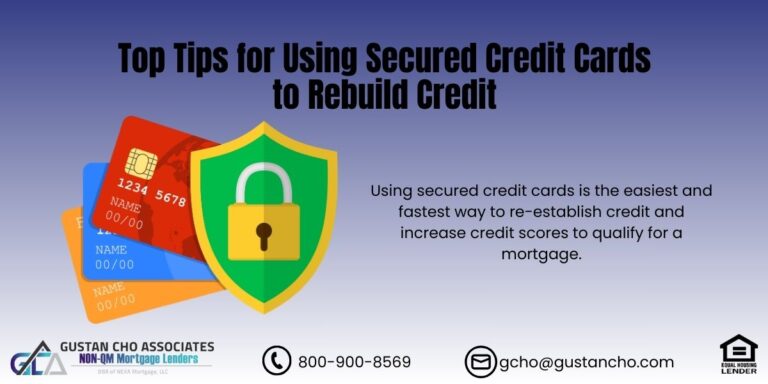Non-Occupant Co-Borrowers For Mortgage Guidelines
In this blog, we will cover and discuss the adding non-occupant co-borrowers for mortgage for homebuyers with high debt-to-income ratios. We will also cover the non-occupant co-borrowers for mortgage guidelines on home loans. If you have dreamed of owning your own home but are unable to meet the requirements needed in order to do so, you may have thought about adding non-occupant co-borrowers for mortgage.
If you are adding non-occupant co-borrowers for mortgage, the non-occupant co-borrowers need to add all the personal credit, income, and asset information as if they were the main borrower. In the following paragraphs, we will cover the mortgage guidelines on non-occupant co-borrowers for mortgage guidelines on government and conventional loans.
Are There Restrictions on Who Can Be Non-Occupant Co-Borrowers For Mortgage?
A co-borrowers name goes on the title, and they partially own the property. A co-signer does not have ownership of any kind. If you are married or live with a significant other who would qualify, you can use them as a co-borrower. What if they don’t qualify or if you do not have a significant other who is going to live with you?
Can you have a co-borrower sign with you if they do not live in the home with you? The good news is that you can, with a Conventional Loan and an FHA loan. Unfortunately, the VA does not allow for non-occupant co-borrowers. The lender will use the lesser of the two signers’ credit scores to determine eligibility.
Who Can Be a Non-Occupying Co-Borrower?
Any person who will be willing to be a partner in home ownership with the borrower can be a co-borrower. They can be parents, children, sisters, brothers, cousins, etc.
It doesn’t matter what the relationship is as long as it is a family member. The co-borrower will need to meet the qualification of the lender in order to be acceptable.
Non-Occupant Co-Borrowers For Mortgage Guidelines on Conventional Loans
If you are having difficulty showing an income history or have a lower credit score, you might need a co-borrower. Conventional mortgages have stricter guidelines for loans, and therefore, people might have issues qualifying.
The main reason why people have co-borrowers is that they do not qualify for a mortgage on their own. These individuals who might not qualify are sometimes self-employed people who deduct a lot of expenses but don’t show a lot of income on paper.
What Are Conventional Loan Requirements
Knowing what requirements a conventional loan will need to qualify will help you determine if you need a co-borrower. Typically, you need a 620 credit score or more, reliable income, at least a 3-5% downpayment, a debt-to-income ratio below 43%, and a clean credit history- meaning no bankruptcy and foreclosure.
Fannie Mae’s guidelines require the lender to review the property’s title history and ensure it’s clear of any prior ownership claims from previous owners or any judgments or liens, such as unpaid property taxes. Title insurance is required to cover the loan amount on the purchase or refinance of any Fannie Mae loan.
A lender will look for at least a two-year employment history. These are from Fannie Mae and Freddie Mac, but the lender can also set requirements as well.
HUD Non-Occupant Co-Borrower Guidelines on FHA Loans
Homebuyers can qualify for an FHA with a Non-occupant co-borrower. You can have multiple non-occupant co-borrowers. Non-occupant co-borrowers need to be related to the main borrower by marriage, blood, or law. HUD, the parent of the Federal Housing Administration, administers FHA loans. FHA loans are home loans for owner-occupant properties only. You cannot use FHA loans for a second home or investment property. HUD guidelines state that the main borrowers on the FHA loan must reside at the residence as their primary home.
HUD Guidelines on FHA Loans
HUD, allow non-occupant co-borrowers who are not related to the main borrower by law, marriage, or blood with a 25% down payment or a 75% loan to value. Home buyers can qualify for a 3.5% down payment FHA loan with at least a 580 credit score. FHA loans are very popular for first-time homebuyers, borrowers with less-than-perfect credit, and homebuyers with high debt-to-income ratios. Homebuyers can qualify for an FHA loan with credit scores down to 500 FICO. For homebuyers with credit scores under 580 and down to 500 FICO, HUD requires a 10% down payment.
HUD Guidelines on Friends As Non-Occupant Co-Borrowers For Mortgage
If you are not related to the non-occupant co-borrower, HUD may allow it; however, you will need to pay a 25% down payment. Lenders may allow friends to be non-occupant co-borrowers, but not all will. You need to find a lender who will work with that situation if you have no family that can assist you. If you have a friend willing to help, you would be asked to provide proof that you have been friends for five or more years.
Will Being Non-Occupant Co-Borrowers Help Me Qualify For Mortgage?
With all this talk about co-borrowers, you might be wondering if you sign as a co-borrower for a family member, will this improve your chances of qualifying for your mortgage? It can help, but you will be asked to show that you have not had to pay this mortgage. They will factor this monthly payment into your debt-to-income ratio unless you can show 12 months’ worth of bank statements showing that you have not paid this.
The primary borrower must show that they have made the payments. They can also do this by showing bank statements or checks demonstrating that they have been the ones making the payments. It will hurt you if they have not been prompt with payments or they have missed payments.
Should I Get Non-Occupant Co-Borrowers For Mortgage?
Having a co-borrower is a massive help if you might not qualify for a mortgage. It isn’t very reassuring to discover that you don’t meet qualifications, and the lender might ask you if you have a co-borrower. If you can secure a co-borrower, even a non-occupant co-signer, you can use the security from their income and their credit history to help get the mortgage. There is a risk for the co-borrower because the financial risk is theirs as well, as they partially own the home. If the primary borrower declares bankruptcy or undergoes foreclosure, this can show up on both people’s credit reports.
Who Should I Not Have As Non-Occupant Co-Borrowers For Mortgage
Not all individuals are cut out for being co-borrower. Someone might be a fantastic uncle, but they might not make the cut. You do not want to ask someone who might be more interested in making money off the home than helping you get your dream home. Knowing the person you have requested and trusting them is essential.
Typically, by just the nature of being a co-borrower, you would have to have complete trust anyway, as many people do not want this responsibility. Additionally, before you ask someone to be a co-borrower, you need to ensure that you are ready to take on the financial burden of owning a home, knowing that any failure on your part will directly impact the co-borrower.
Get Pre-Approved With The Best Non-QM Mortgage Lenders For Bad Credit With No Overlays
Due to the increasing cost of living and the fact that many people’s salaries are not keeping up, getting a co-borrower can definitely be an option. If this person does not live under your roof, you can still use them if you use a conventional loan or an FHA loan. To qualify for a mortgage with a lender licensed in 48 states with no overlays, please contact us at Non-QM Mortgage Lenders at 262-716-8151 or text us for a faster response. Or email us at gcho@gustancho.com. The team at Non-QM Mortgage Lenders is available 7 days a week, on evenings, during weekends, and on holidays.







